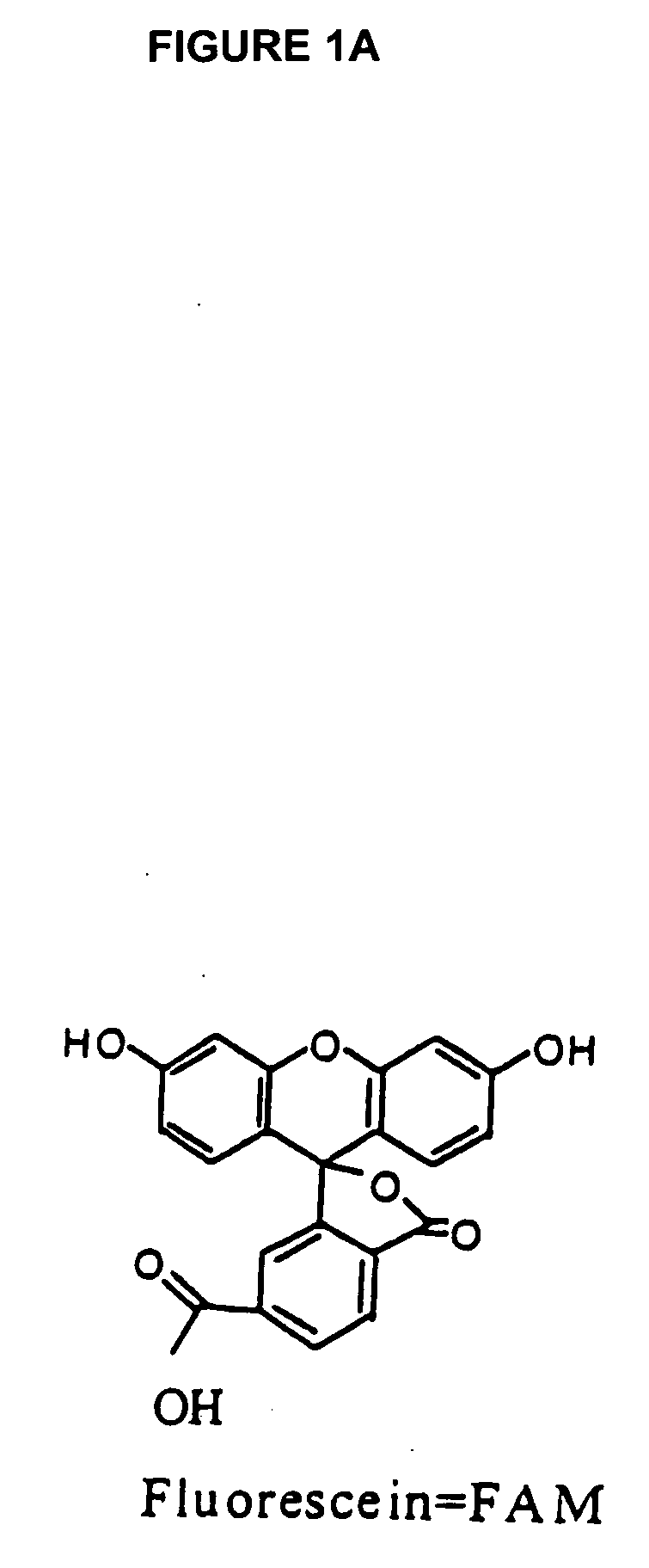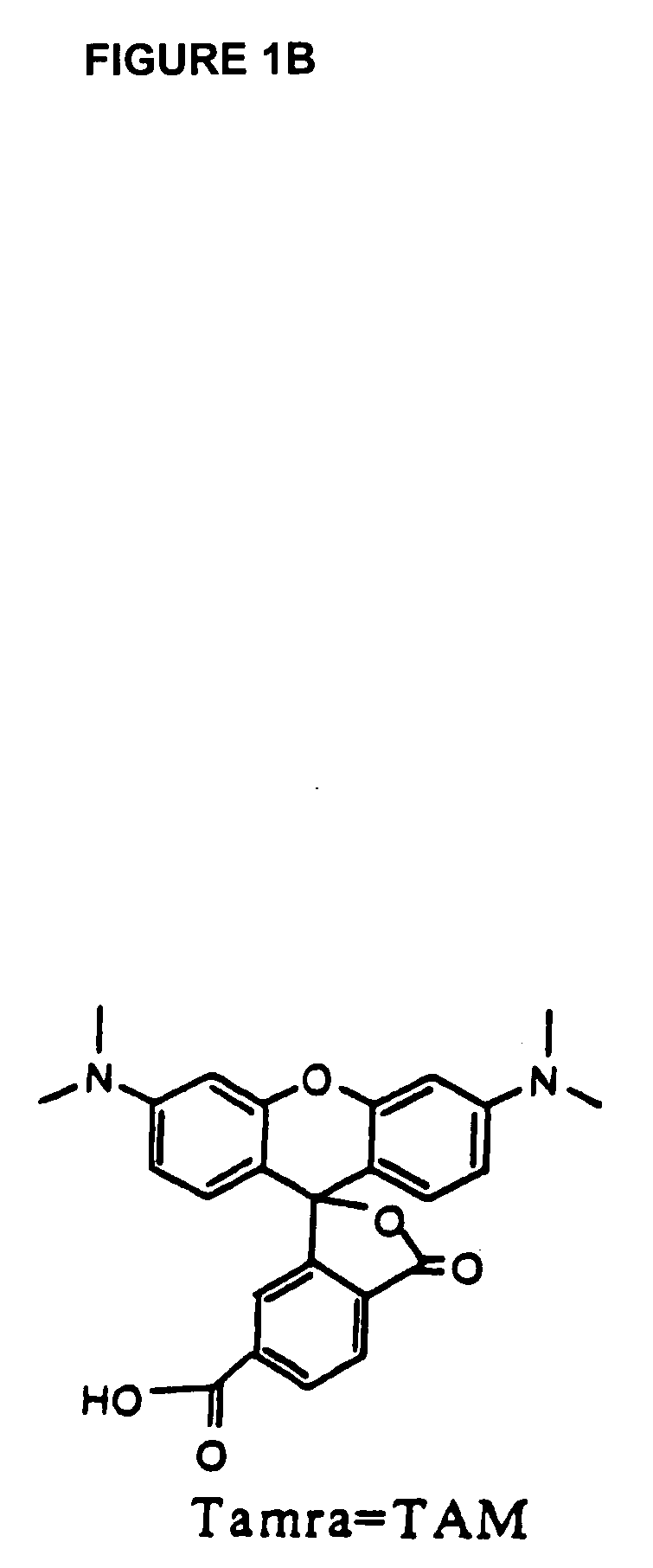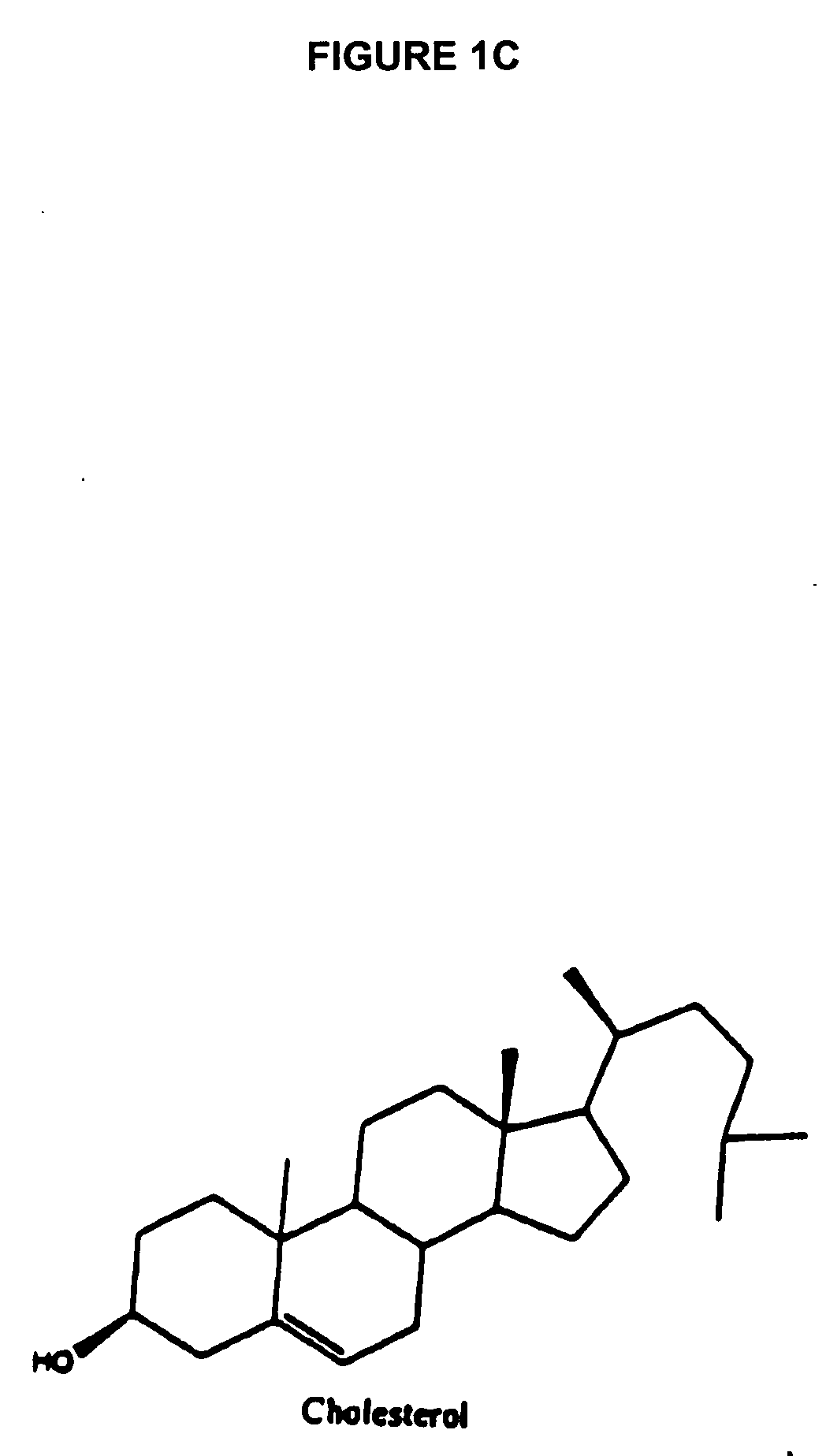Fluorescence energy transfer probes with stabilized conformations
a technology conformation, which is applied in the field of fluorescence energy transfer probes with stabilized conformations to achieve the effects of improving the interaction between the donor/acceptor pair, reducing noise, and improving detection sensitivity
- Summary
- Abstract
- Description
- Claims
- Application Information
AI Technical Summary
Benefits of technology
Problems solved by technology
Method used
Image
Examples
example 1
[0220] Example 1 details the synthesis of an exemplary CAP molecule. This CAP uses two cholesterol stabilizing groups, a fluorescein donor and a rhodamine acceptor. This CAP was found to have a substantially lower background fluorescence than an analogous probe with out the cholesterol stabilizing groups.
1.1 Materials and Methods
[0221] A model CAP probe was synthesized using cholesterol as the hydrophobic ligand. In this simple model, cholesterol units were placed adjacent to both the donor and acceptor (FIG. 1). The model sequence was B-Actin which is a well characterized probe used in the “Taqman” gene quantitation system (ABI-Perkin-Elmer). Both probes were 5′-FAM, 3′-TAMRA labeled as follows:
[0222] Taqman Probe
5′-FAM-d5′CGCAGGATGGCATGGGGGAGGGCAT-TAMRA-3′
[0223] CAP Probe
5′-FAM-CHOL-d5′CGCAGGATGGCATGGGGGAGGGCAT-CHOL-TAMRA-3′
[0224] Each probe was synthesized on a Biosearch 8700 at the 0.200 or 1 micromole scale. 3′-TAMRA was introduced by prederivatized CPG (Biosearch). Cho...
PUM
| Property | Measurement | Unit |
|---|---|---|
| Tm's | aaaaa | aaaaa |
| temperature | aaaaa | aaaaa |
| diameter | aaaaa | aaaaa |
Abstract
Description
Claims
Application Information
 Login to View More
Login to View More - R&D
- Intellectual Property
- Life Sciences
- Materials
- Tech Scout
- Unparalleled Data Quality
- Higher Quality Content
- 60% Fewer Hallucinations
Browse by: Latest US Patents, China's latest patents, Technical Efficacy Thesaurus, Application Domain, Technology Topic, Popular Technical Reports.
© 2025 PatSnap. All rights reserved.Legal|Privacy policy|Modern Slavery Act Transparency Statement|Sitemap|About US| Contact US: help@patsnap.com



